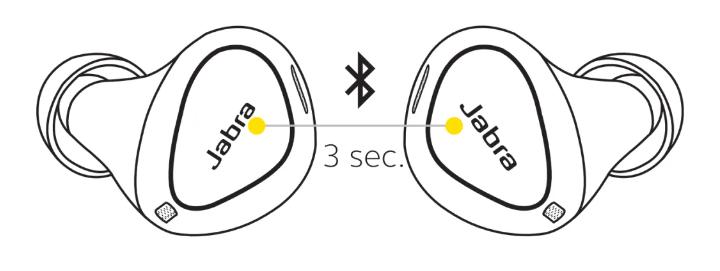The Rise of Conversational Intelligence: A Comprehensive Guide to Chat Artificial Intelligence
In the rapidly evolving landscape of artificial intelligence, one area that has garnered significant attention and integration into our daily lives is Chat Artificial Intelligence, often referred to simply as Chat AI. From answering customer queries to providing personalized recommendations, Chat AI is transforming the way humans interact with technology. This comprehensive guide will delve into the intricacies of Chat AI, exploring its definition, evolution, diverse applications, underlying technologies, current challenges, and the exciting possibilities that lie ahead in this dynamic field.
Toc

1. Introduction to Chat Artificial Intelligence
Chat AI represents a significant leap forward in the realm of human-computer interaction. It goes beyond simple scripted responses to engage in more natural and context-aware conversations. Understanding its core definition and growing importance is fundamental to appreciating its transformative potential.
1.1. Defining Chat Artificial Intelligence (Chat AI)
Chat AI refers to artificial intelligence systems designed to simulate human-like conversation with users through text or voice interactions. These systems are built to understand natural language input, process the information, and generate relevant and coherent responses. Unlike traditional chatbots with pre-programmed scripts, Chat AI leverages advanced algorithms and machine learning techniques to learn from data and adapt to different conversational contexts, making the interaction feel more intuitive and human-like.
1.2. The Growing Importance of Chat AI in the Digital Age
In today’s digital age, where instant communication and personalized experiences are highly valued, Chat AI has emerged as a crucial technology. Businesses are increasingly adopting Chat AI to enhance customer service, automate routine tasks, and provide personalized support at scale. For individuals, Chat AI powers virtual assistants, provides quick access to information, and facilitates seamless interactions with various applications and services. Its ability to handle a large volume of interactions efficiently and provide 24/7 availability makes it an invaluable tool in numerous sectors.
1.3. Distinguishing Chat AI from Traditional Chatbots
While the terms “Chat AI” and “chatbot” are often used interchangeably, there is a distinction. Traditional chatbots typically rely on predefined rules and keyword recognition to respond to user input. They follow a set of scripts and can only handle conversations within their programmed parameters. Chat AI, on the other hand, utilizes natural language processing (NLP) and machine learning (ML) to understand the nuances of human language, including context, intent, and even sentiment. This allows Chat AI to engage in more complex and dynamic conversations, learn from interactions, and provide more personalized and relevant responses.
1.4. The Potential Impact of Chat AI on Human Interaction
The rise of sophisticated Chat AI has profound implications for human interaction across various domains. In customer service, it can provide instant support and resolve issues quickly, potentially improving customer satisfaction. In education, it can offer personalized learning experiences and provide students with on-demand assistance. In personal life, virtual assistants powered by Chat AI can help manage schedules, provide information, and automate tasks. While the potential benefits are immense, it also raises questions about the future of human roles in these areas and the importance of maintaining genuine human connection.
2. The Evolution and Types of Chat AI
The journey of Chat AI has been marked by significant advancements, from early rule-based systems to the sophisticated AI-powered models we see today. Understanding this evolution and the different types of Chat AI is crucial for appreciating its current capabilities and future trajectory.

2.1. A Brief History of Conversational AI
The concept of conversational AI dates back several decades. Early attempts focused on creating systems that could mimic human conversation through predefined rules and pattern matching. ELIZA, developed in the 1960s, was one of the first examples, using simple techniques to simulate a psychotherapist. Over time, advancements in computing power and AI algorithms paved the way for more sophisticated systems. The rise of the internet and the increasing availability of data further fueled the development of Chat AI, leading to the sophisticated models we have today, capable of understanding and generating human-like text with remarkable fluency.
2.2. Rule-Based Chatbots vs. AI-Powered Chatbots
As mentioned earlier, there is a fundamental difference between rule-based chatbots and AI-powered chatbots. Rule-based chatbots operate on a predefined set of rules and decision trees. They can only respond to specific commands or keywords that they have been programmed to recognize. While they can be effective for simple and repetitive tasks, they lack the flexibility and adaptability to handle more complex or nuanced conversations. AI-powered chatbots, on the other hand, leverage NLP and ML techniques to understand the intent behind user input, even if it’s phrased in different ways. They can learn from past interactions, improve their responses over time, and handle a wider range of conversational scenarios.
1. https://ngungtaonghiep.com/mmoga-elevate-your-websites-with-free-web-hosting-services-1
2. https://ngungtaonghiep.com/mmoga-the-power-of-managed-wordpress-hosting-1
3. https://ngungtaonghiep.com/mmoga-top-5-cloud-storage-providers-in-us-a-comprehensive-review-1
2.3. Understanding Natural Language Processing (NLP) in Chat AI
Natural Language Processing (NLP) is a crucial component of Chat AI. It is the field of AI that focuses on enabling computers to understand, interpret, and generate human language. In the context of Chat AI, NLP techniques are used to analyze user input, extract meaning, identify intent, and formulate appropriate responses. This involves various sub-tasks such as tokenization (breaking down text into individual words), part-of-speech tagging (identifying the grammatical role of each word), named entity recognition (identifying important entities like names, dates, and locations), and sentiment analysis (determining the emotional tone of the text).
2.4. Machine Learning and Deep Learning in Chat AI Development
Machine learning (ML) and particularly deep learning (a subfield of ML) have been instrumental in the recent advancements in Chat AI. ML algorithms allow AI systems to learn from large datasets without being explicitly programmed for every possible scenario. In Chat AI, ML models are trained on vast amounts of text and conversational data to learn patterns in language, understand context, and generate coherent responses. Deep learning models, with their multi-layered neural networks, have shown remarkable capabilities in tasks like natural language understanding and generation, leading to the development of highly sophisticated Chat AI systems.
2.5. Different Architectures of Chat AI: Retrieval-Based vs. Generative Models
Chat AI systems can be broadly categorized into two main architectures: retrieval-based models and generative models. Retrieval-based models work by selecting the most appropriate response from a predefined set of possible answers based on the user’s input and the context of the conversation. These models are often easier to train and can provide consistent and relevant responses for specific domains. Generative models, on the other hand, generate new responses from scratch based on their understanding of the input and the vast amount of data they have been trained on. These models are more flexible and can handle a wider range of conversational topics, often exhibiting more human-like creativity in their responses. However, they can also be more complex to train and may sometimes generate less consistent or even nonsensical responses.
3. Applications of Chat AI Across Industries
The versatility of Chat AI has led to its adoption across a wide range of industries, transforming various aspects of business operations and customer interactions.
3.1. Customer Service and Support
One of the most prominent applications of Chat AI is in customer service and support. Chatbots powered by AI can handle a large volume of customer inquiries simultaneously, providing instant responses to common questions, resolving simple issues, and routing complex queries to human agents. This can significantly improve customer satisfaction, reduce response times, and lower operational costs for businesses. From answering FAQs to providing technical support, Chat AI is becoming an indispensable tool in modern customer service.
3.2. Sales and Marketing
Chat AI is also playing an increasingly important role in sales and marketing. AI-powered chatbots can engage with potential customers on websites and social media platforms, answer product-related questions, provide personalized recommendations, and even guide users through the purchasing process. By offering proactive and personalized interactions, Chat AI can help businesses generate leads, increase conversion rates, and improve the overall customer experience.
3.3. Healthcare and Patient Assistance
In the healthcare industry, Chat AI is being used to provide patients with information about their conditions, schedule appointments, remind them about medications, and offer initial diagnoses for common ailments. Virtual health assistants powered by AI can also monitor patients’ health remotely and provide personalized advice. While Chat AI cannot replace human doctors, it can serve as a valuable tool for providing convenient and accessible healthcare support, especially for routine inquiries and administrative tasks.
3.4. Education and Learning
Chat AI has the potential to revolutionize education and learning by providing personalized and interactive learning experiences. AI-powered tutors can adapt to individual students’ learning styles, provide customized feedback, and offer on-demand assistance with coursework. Chatbots can also be used to answer students’ questions, provide information about educational resources, and even facilitate collaborative learning activities. This can lead to more engaging and effective learning outcomes for students of all ages.
3.5. Personal Assistants and Productivity Tools
Virtual personal assistants like Siri, Alexa, and Google Assistant are prime examples of Chat AI in action. These AI-powered assistants can understand voice commands and perform a wide range of tasks, such as setting reminders, scheduling appointments, playing music, providing weather updates, and controlling smart home devices. Chat AI is also being integrated into various productivity tools to help users manage their tasks, organize their information, and improve their overall efficiency.
4. The Technology Behind Chat AI
The impressive capabilities of Chat AI are underpinned by a combination of sophisticated technologies working in concert. Understanding these core technologies provides a deeper appreciation for how Chat AI systems function.

4.1. Natural Language Understanding (NLU)
Natural Language Understanding (NLU) is a subfield of NLP that focuses on enabling computers to understand the meaning and intent behind human language. In Chat AI, NLU techniques are used to analyze user input, identify the key entities and concepts being discussed, and determine the user’s goal or request. This involves tasks like intent recognition (understanding what the user wants to achieve), entity extraction (identifying specific pieces of information like dates, times, and locations), and semantic analysis (understanding the meaning of words and phrases in context).
4.2. Natural Language Generation (NLG)
Natural Language Generation (NLG) is the counterpart to NLU and focuses on enabling computers to generate human-like text that is coherent, relevant, and grammatically correct. In Chat AI, NLG is used to formulate responses to user input based on the system’s understanding of the conversation. This involves tasks like content planning (deciding what information to include in the response), sentence structuring (organizing the information into grammatically correct sentences), and surface realization (generating the final text in a natural and fluent style).
2. https://ngungtaonghiep.com/mmoga-the-power-of-managed-wordpress-hosting-1
3. https://ngungtaonghiep.com/mmoga-elevate-your-websites-with-free-web-hosting-services-1
4.3. Dialogue Management and Flow Control
Dialogue management is the process of controlling the flow of a conversation between the user and the Chat AI system. It involves keeping track of the conversation history, understanding the current state of the interaction, and deciding what the next appropriate response should be. Effective dialogue management ensures that the conversation progresses logically and that the Chat AI system can handle different conversational turns and user behaviors, including follow-up questions, clarifications, and changes in topic.
4.4. Sentiment Analysis and Emotion Detection
Sentiment analysis is the process of identifying the emotional tone expressed in a piece of text, such as whether it is positive, negative, or neutral. Some advanced Chat AI systems also incorporate emotion detection capabilities, allowing them to recognize specific emotions like joy, sadness, or anger in user input. This information can be valuable for tailoring the Chat AI’s responses to the user’s emotional state, leading to more empathetic and effective interactions, especially in customer service scenarios.
4.5. Integration with Other AI and Software Systems
Modern Chat AI systems often integrate with other AI technologies and software systems to enhance their capabilities and provide more comprehensive solutions. For example, a Chat AI system might integrate with a knowledge base to access and retrieve information, with a CRM (Customer Relationship Management) system to access customer data, or with other AI models for tasks like image recognition or speech synthesis. This integration allows Chat AI to leverage a wider range of functionalities and provide more sophisticated and context-aware interactions.
5. Challenges and the Future of Chat AI
Despite the significant advancements in Chat AI, there are still challenges to overcome and exciting possibilities on the horizon for the future of this technology.
5.1. Limitations of Current Chat AI Systems
While Chat AI has made great strides, current systems still have limitations. They can sometimes struggle with understanding complex or ambiguous language, handling conversations that deviate significantly from their training data, and exhibiting true creativity or common sense. Overcoming these limitations requires further research and development in areas like natural language understanding, reasoning, and knowledge representation.
5.2. Ethical Considerations and Bias in Chat AI
As Chat AI systems become more integrated into our lives, ethical considerations are becoming increasingly important. One concern is the potential for bias in AI models, which can arise from biased training data and lead to unfair or discriminatory outcomes. Ensuring fairness, transparency, and accountability in Chat AI development and deployment is crucial to building trust and preventing negative consequences.
5.3. The Role of Chat AI in the Future of Work
The increasing capabilities of Chat AI are raising questions about its role in the future of work. While Chat AI can automate many routine tasks and improve efficiency, there are concerns about the potential displacement of human workers in certain industries. Understanding how to best integrate Chat AI into the workforce and prepare for the changing nature of jobs will be a key challenge in the coming years.
5.4. Emerging Trends and Advancements in Chat AI
The field of Chat AI is constantly evolving, with new research and advancements emerging regularly. Some exciting trends include the development of more sophisticated language models with improved understanding and generation capabilities, the integration of multimodal AI that can process and respond to various forms of input like text, voice, and images, and the development of more personalized and context-aware Chat AI systems that can better understand individual user needs and preferences.
5.5. The Human Element in the Age of Chat AI
Despite the increasing sophistication of Chat AI, the human element remains crucial. While Chat AI can handle many tasks efficiently, there are still situations that require human empathy, judgment, and creativity. The future of successful Chat AI implementation will likely involve a collaborative approach, where AI systems work alongside humans to enhance productivity, improve experiences, and solve complex problems. Maintaining a focus on human-centered design and ensuring that Chat AI serves to augment, rather than replace, human capabilities will be essential.
In conclusion, Chat Artificial Intelligence has emerged as a transformative technology with the potential to revolutionize the way we interact with computers and the world around us. From enhancing customer service to personalizing learning experiences, its applications are vast and continue to expand. While challenges remain, the ongoing advancements in the field promise an exciting future for conversational intelligence, one where humans and AI can engage in more natural, intuitive, and productive conversations.















